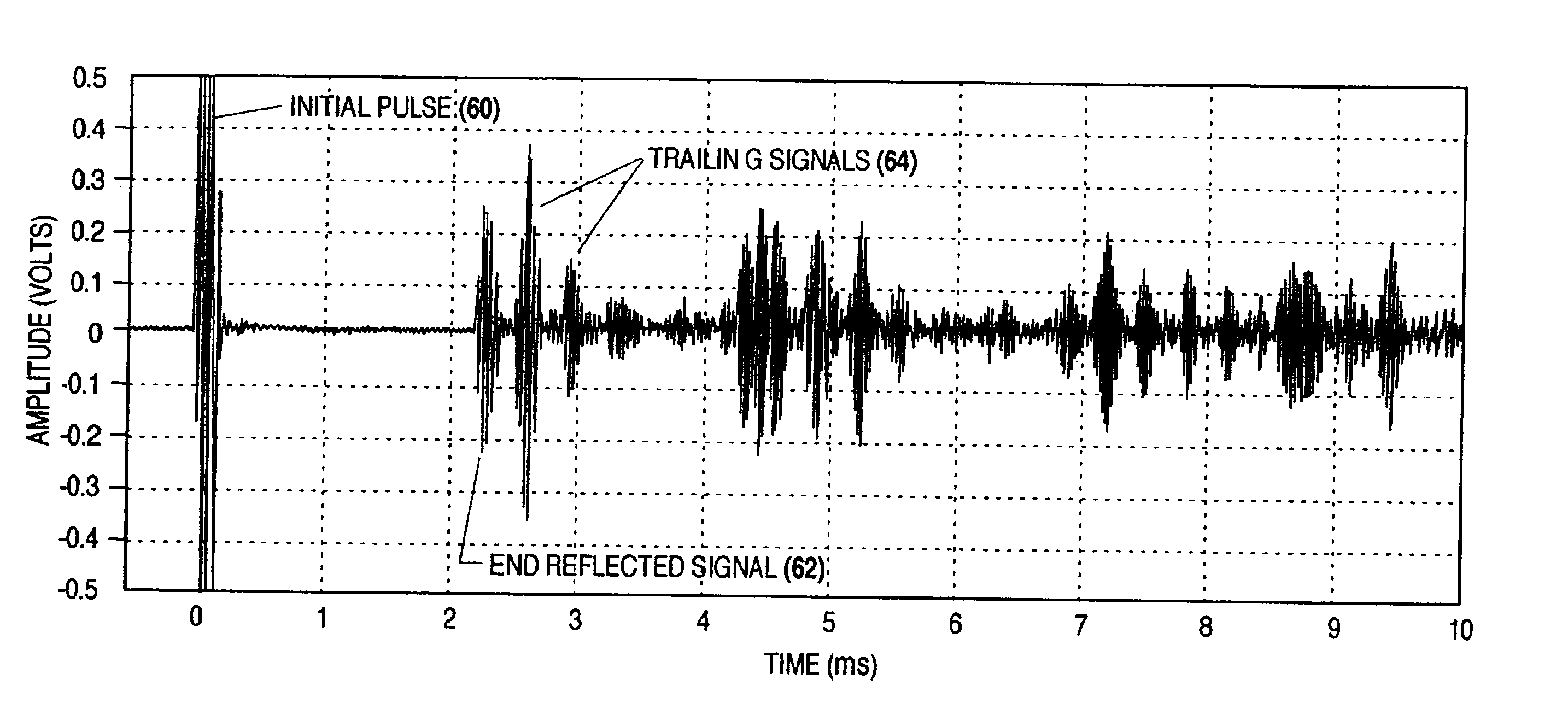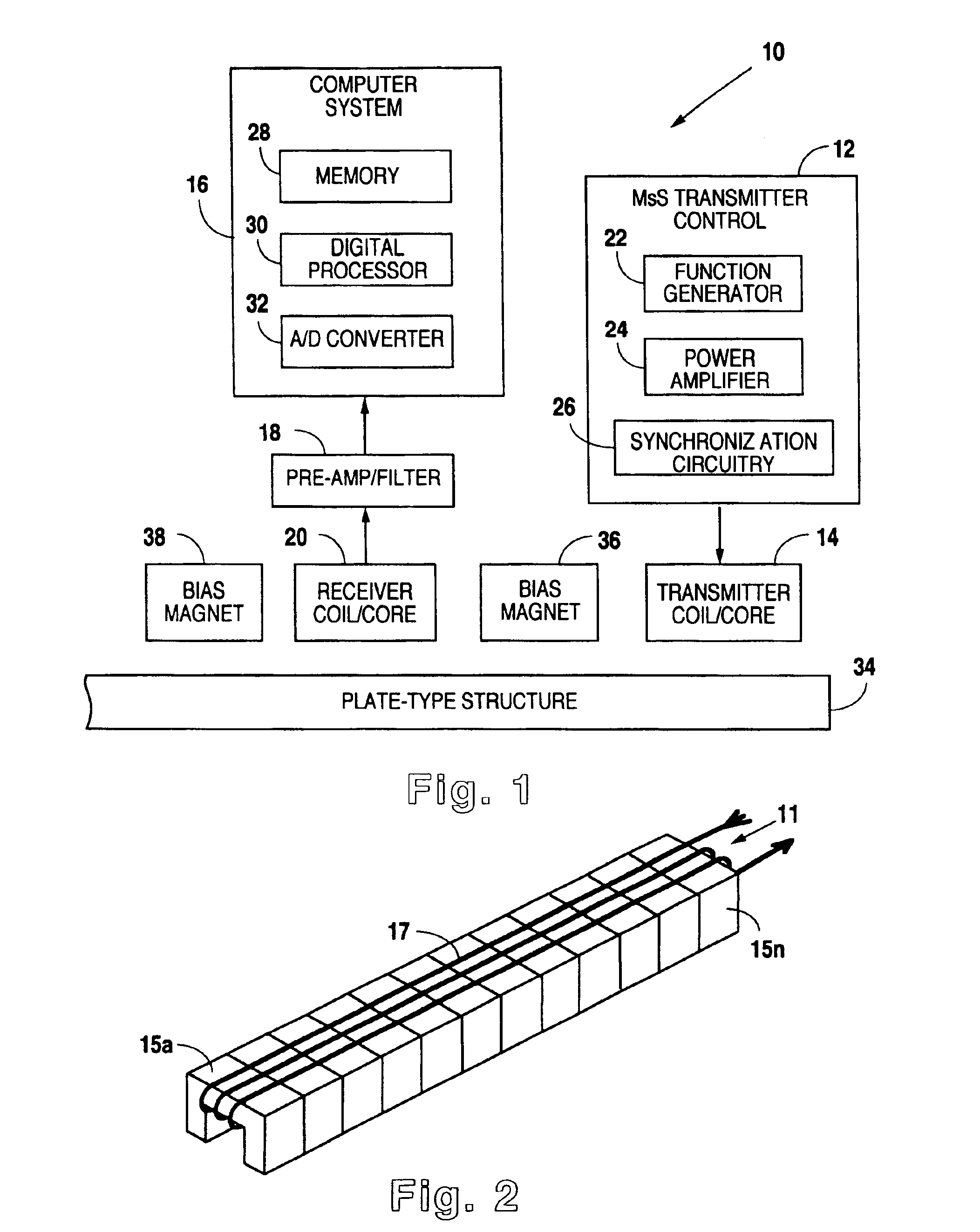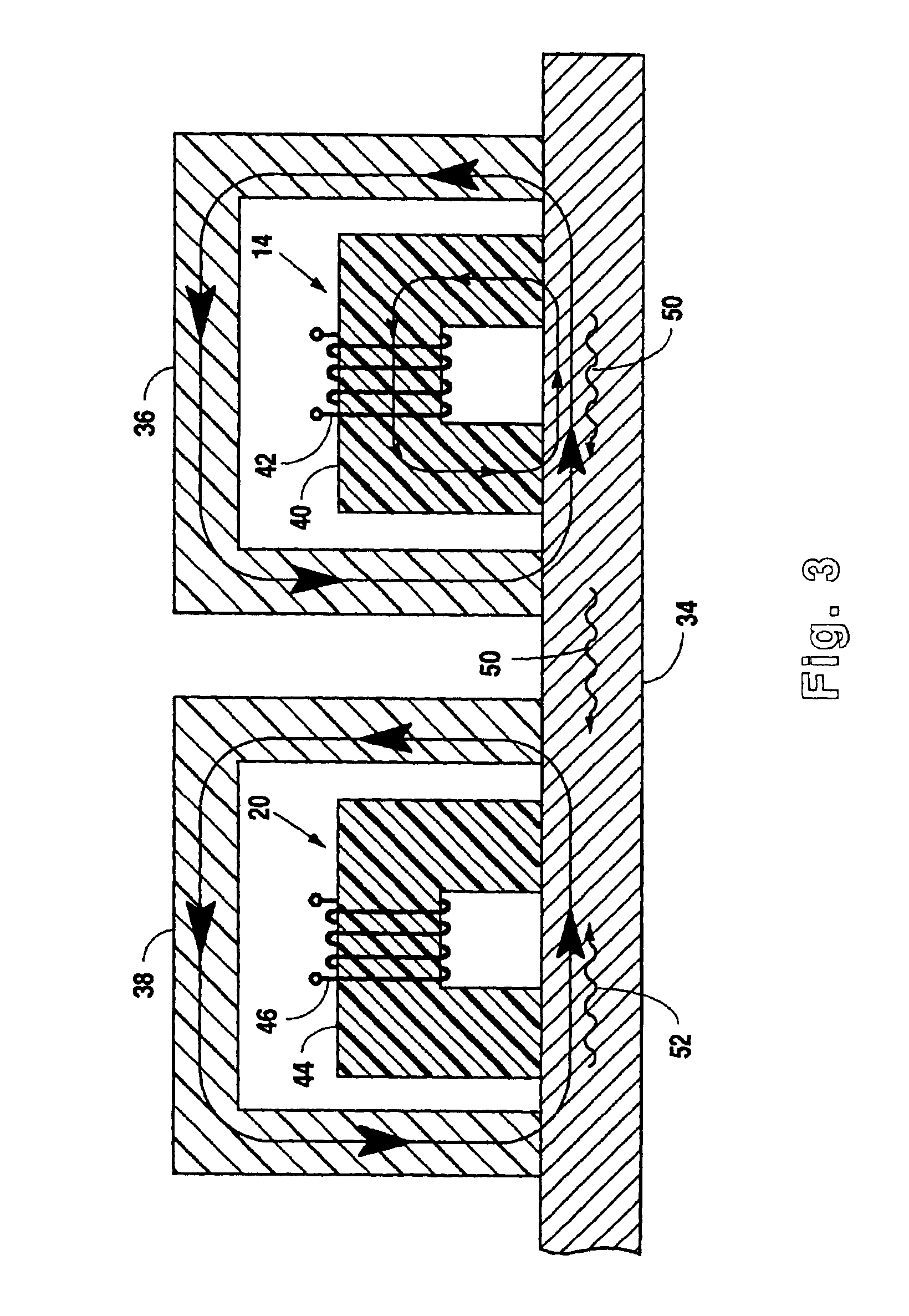Method and apparatus generating and detecting torsional wave inspection of pipes or tubes
a technology of torsional wave and inspection method, which is applied in the direction of material magnetic variables, instruments, specific gravity measurements, etc., can solve the problems of limited device sensitivity, increased incidents of degradation, and limited ability to inspect a material in the immediate vicinity
- Summary
- Abstract
- Description
- Claims
- Application Information
AI Technical Summary
Benefits of technology
Problems solved by technology
Method used
Image
Examples
Embodiment Construction
[0050]As indicated above, the present invention utilizes the basic methodological approach of earlier developed magnetostrictive sensor techniques associated with the inspection of cylindrical structures such as pipe, tubes, and the like. The basic system of such techniques is combined with a novel magnetostrictive sensor for application to plate type structures. Reference is made first to FIG. 1 for a general description of the complete system utilized to carry on the inspection of a plate type structure. Inspection system 10 includes a magnetostrictive sensor transmitter control 12 and an associated transmitter coil / core 14. Transmitter coil / core 14 is positioned adjacent to the surface of plate type structure 34. Also positioned near the surface of plate type structure 34 is receiver coil / core 20. Receiver coil / core 20 is positioned to detect reflected waves within plate type structure 34 and to thereby generate a signal representative of the wave characteristics that are reflect...
PUM
| Property | Measurement | Unit |
|---|---|---|
| distances | aaaaa | aaaaa |
| length | aaaaa | aaaaa |
| thick | aaaaa | aaaaa |
Abstract
Description
Claims
Application Information
 Login to View More
Login to View More - R&D
- Intellectual Property
- Life Sciences
- Materials
- Tech Scout
- Unparalleled Data Quality
- Higher Quality Content
- 60% Fewer Hallucinations
Browse by: Latest US Patents, China's latest patents, Technical Efficacy Thesaurus, Application Domain, Technology Topic, Popular Technical Reports.
© 2025 PatSnap. All rights reserved.Legal|Privacy policy|Modern Slavery Act Transparency Statement|Sitemap|About US| Contact US: help@patsnap.com



